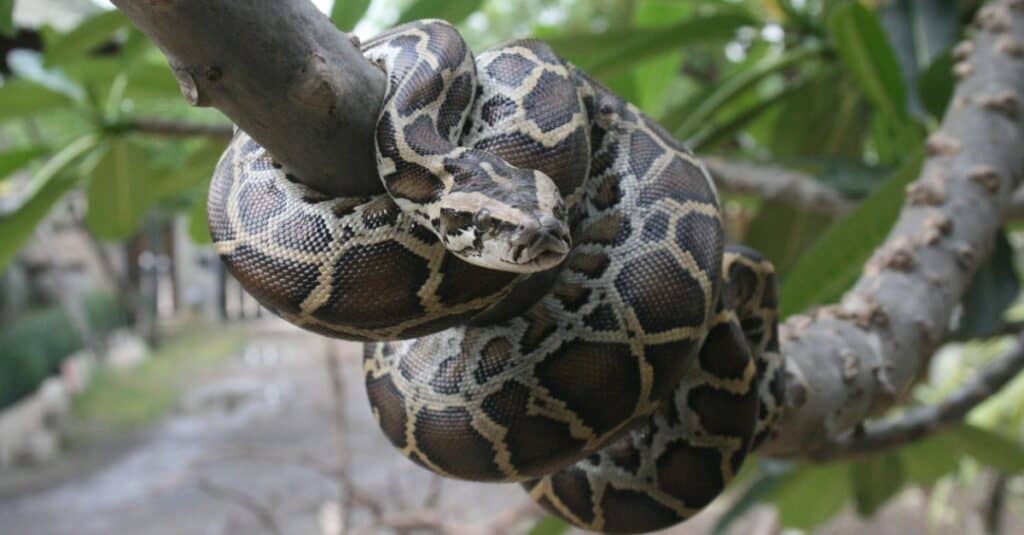In the Big Cypress National Preserve in South Florida, hunters from the area this week bagged a 19-foot Burmese python. It is the biggest one ever documented. Jake Waleri is a 22 year old from Naples. He captured a wild python in July of 2023.
He brought the animal the Conservancy of Southwest Florida there. The snake, which was 19 feet long and 125 pounds, according to local officials, broke all the records they had on file for length of a Burmese python!
As the young man drags the snake into the roadway by its tail, the python lunges at him in a clip that showcases his impressive catch. Before others came in to assist with getting the snake under control, Waleri and the serpent grappled on the ground.
The Burmese python is one of the largest snakes on the planet. If that’s not enough, they are an invasive species that has invaded the majority of southern Florida. As a result of the lack of pythons’ natural predators in the state of Florida, they are causing devastation to the native wildlife of the state.
Waleri devotes his evenings to pursuing these terrifying hunters. The Florida Fish and Wildlife Conservation Commission claims that because of the grave risk that these reptiles bring about, both hunters and locals are allowed to kill them.
Anti-cruelty rules, nevertheless, which mandate that hunters kill serpents humanely, are in place.
Are Burmese Pythons Dangerous?

Burmese pythons can have up to 120 teeth!
©iStock.com/Lunatic_67
Burmese pythons have been known to bite in self-defense. The majority of the time, these snakes are not a threat to humans. Larger Burmese Pythons, on the other hand, have exceptionally sharp teeth, and bites that can result in severe wounds.
Dogs and cats can also be easily consumed by these massive creatures. Almost all snake bites happen when a python is purposefully disturbed. Burmese pythons generally hide out in thick jungles to avoid being discovered.
These snakes can assault an attacker swiftly if they are trapped. Burmese pythons may bite the perpetrator and cling on while squirming and constricting if they are caught or restrained. However, these reptiles are not hostile, and they only strike in self-defense in extreme cases.
Where Do Burmese Pythons Live?

The Florida Everglades is home to over 20 species of snakes!
©ocudrone/Shutterstock.com
Parts of China, Burma, Thailand, and the Malay Archipelago are all home to these snakes. While they can thrive in a range of habitats, including prairies, marshy areas, swamps, and rugged hillsides, Burmese pythons prefer to reside in rainforests close to waterways.
Populations rely on a reliable water supply. Burmese pythons have been discovered in and around agricultural land, canals and lakes, grasslands, mangrove swamps, housing developments, and throughout the Everglades in Florida.
The photo featured at the top of this post is © dwi putra stock/Shutterstock.com
Discover the "Monster" Snake 5X Bigger than an Anaconda
Every day A-Z Animals sends out some of the most incredible facts in the world from our free newsletter. Want to discover the 10 most beautiful snakes in the world, a "snake island" where you're never more than 3 feet from danger, or a "monster" snake 5X larger than an anaconda? Then sign up right now and you'll start receiving our daily newsletter absolutely free.
Thank you for reading! Have some feedback for us? Contact the AZ Animals editorial team.







